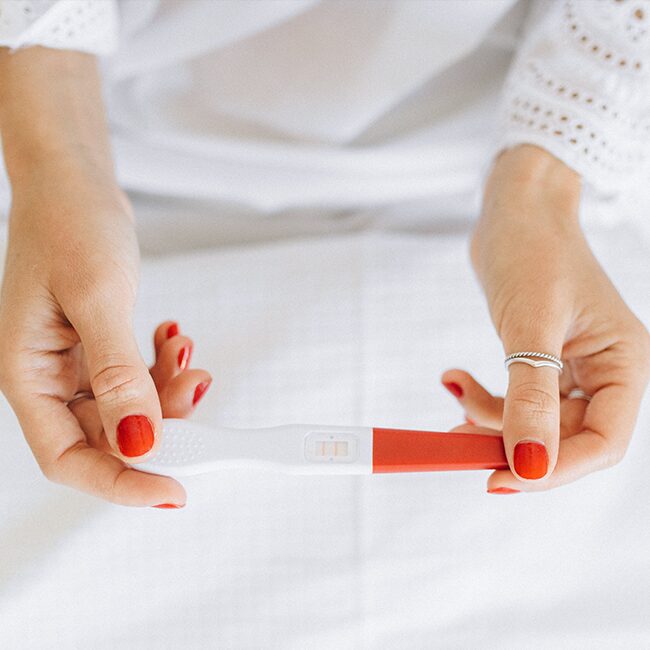Pregnancy test : The beta-hcg test

The pregnancy test is a blood test for the bêta-hCG hormone. It is performed in the laboratory using a blood sample, without the need to fast.
When should I take the test ? How can it be interpreted ?
This test is reimbursed by the CNS upon medical prescription, unlike a urine test purchased from a pharmacy.
What is beta-hCG ?
HCG, or human chorionic gonadotropin, is a hormone secreted by pregnant women. It is produced by the placenta, more specifically by cells called trophoblast cells, from the sixth day after conception. The level of this hormone increases steadily during the first trimester of pregnancy. In most cases, the level of this hormone will be negative outside of pregnancy.
It is composed of an alpha chain which is common to many hormones and a beta chain specific to the pregnancy hormone.
When to do the test ? How to interpret it ?
The hormone level is generally positive from the 6th day after fertilisation (around 3 weeks after the date of your last menstrual period), and then increases steadily during the 1st trimester of pregnancy. It doubles approximately every 36 to 48 hours until the 10th week of pregnancy, and then decreases during the second and third trimesters.
A level lower than 5 IU/L is usually sufficient to rule out pregnancy, unless the test is carried out too early.
It is a good idea to wait until a day or two before you expect your period to start to perform the test. If the value is low (below 25 IU/L), it is preferable to repeat the test 48 hours later to check whether the level has increased.
In twin pregnancies (woman pregnant with twins), bêta-hCG levels are generally higher.
The beta-hCG test does not provide an accurate date for the start of the pregnancy, as very different levels may be observed from one woman to another. An ultrasound scan will therefore be required to date the start of the pregnancy.
Can it be used for monitoring purposes ?
It is very important to carry out regular checks.
In high-risk situations or when there are signs that may indicate an abnormal development in the pregnancy,
the bêta-hCG level can be monitored by successive tests performed every 48 hours. Indeed, the level of this hormone increases steadily during the first trimester of pregnancy. It then stabilises and decreases during the second and third trimesters.
Suspected miscarriage :
In the event of suspected miscarriage (bleeding, abdominal pain), the bêta-hCG test is repeated several times within a few days. The diagnosis of miscarriage is made if there is a decrease in the bêta-hCG level. The level should become negative again.
Suspected ectopic pregnancy (EP) :
The presence of abdominal pain and/or bleeding may indicate an abnormal development in the pregnancy, leading to a bêta-hCG test being performed. If the level of this hormone is lower than the normal range for pregnancy and does not increase in two subsequent samples, an ectopic pregnancy may be suspected. An ultrasound scan will then be performed in order to confirm the diagnosis.
Suspected molar pregnancy or hydatidiform mole :
At the time of conception, the placenta can develop abnormally and lead to the formation of a small tumour called a mole. This is known as molar pregnancy or hydatidiform mole (1 case per 1000 pregnancies).
A very high level of beta-hCG is then observed, associated with a suspicious image on ultrasound.
Treatment consists of evacuating the placental tissue present in the uterus by aspiration. Follow-up is then required with beta-hCG monitoring for 6 months to 1 year depending on the case.
Other cases of HCG dosing :
Testicular cancer screening for men :
HCG is also secreted by men and is one of the markers for testicular cancer. The test is carried out preoperatively and for therapeutic follow-up.
Vous souhaitez vous informer & prendre soin de votre santé ?
Inscrivez-vous à la newsletter patients Ketterthill !
Recevez des informations santé et conseils de prévention chaque mois




